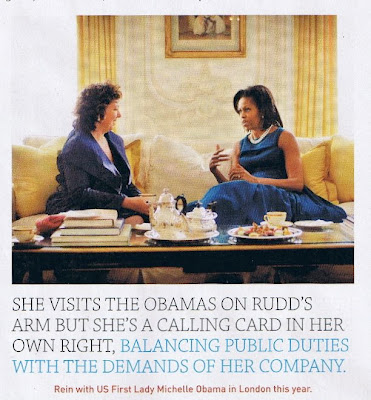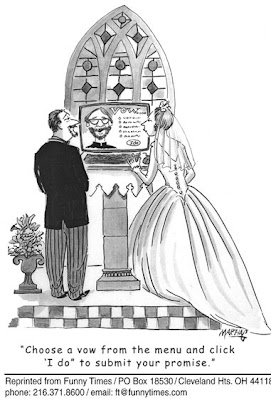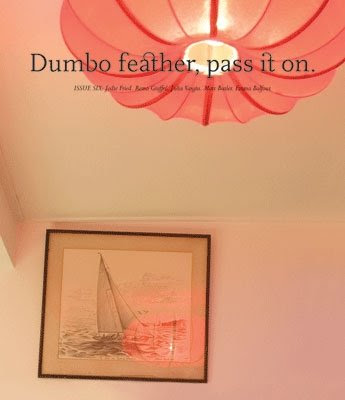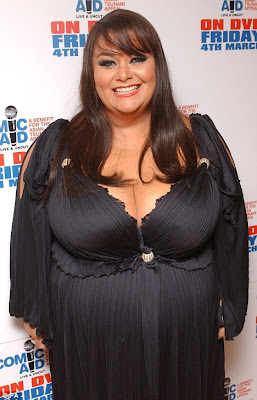 In a classic case of glossy one-upmanship, News Limited's Sunday magazine has responded to Fairfax competitor Sunday Life's recent image overhaul by having a little nip-and-tuck "mini makeover" of its own. This is no time to be resting on one's publishing laurels, after all.
In a classic case of glossy one-upmanship, News Limited's Sunday magazine has responded to Fairfax competitor Sunday Life's recent image overhaul by having a little nip-and-tuck "mini makeover" of its own. This is no time to be resting on one's publishing laurels, after all.Truth be told, I could live on these magazine-style
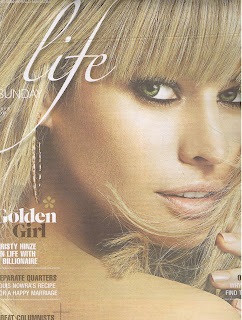
supplements alone (throw in
Good Weekend,
Body & Soul and
The Age's
A2 and my print media consumption needs are very nearly met). Essentially, they're covering the same editorial territory as the monthly glossies, and in some areas they're doing it better. And for FREE (cost of your Sunday newspaper – around $2 – withstanding)!
Where they fall short of the monthlies is in sheer volume, shelf life and masthead prestige. Where they excel is in readership numbers (see the below stats) and value-for-money editorial for the time-poor consumer. Content-wise, these supplements promise to fill the Sunday morning time gap once occupied by church-going: coupled with breakfast in bed or brunch at a beachside cafe, they are rituals onto themselves. In that sense, they provide a unique, relaxed reading environment ripe for perusing those advertising pages.
While
Sunday magazine has long been the home of the celebrity cover story coupled by glossy beauty and fashion editorials to rival
Harper's BAZAAR,
Sunday Life has been the more lifestyle-oriented of the two titles, with a more serious

journalistic edge, perhaps because of its Fairfax broadsheet roots.
Now,
Sunday Life is now positioning itself as a supplement skewed towards women, with an "authentic and meaningful" flavour. "We will deliver editorial substance coupled with superior design. We want to give it a strong, clear direction that will appeal to smart women looking for enjoyment and relaxation as well as good practical tips on everything from midweek cooking to shopping, fitness and wellbeing,” says Fairfax Magazines publisher Lisa Hudson.
Sunday leans more towards the non-gender-specific entertainment market, with celebrity profiles, male and female columnists, "topical" features, pop culture tidbits, food, fashion and beauty: "
Sunday magazine is designed to keep you up to date about the worlds of celebrity, music, movies and style. From topical to popsicle, frivolous to fabulous – it’s what
Sunday mornings are made for!" says editor Sara Mulcahy.
Aesthetically speaking,
Sunday wins hands-down. Its glossy

stock, smaller dimensions (easier to scan, thank you!) and gorgeous layouts make for a visually complementary reading experience you can flick through over brekkie without totally blocking out the view of your partner (that would just be rude, no?).
Sunday Life has increased its dimensions, changed to a matte paper stock and now runs the same similarly pretty celebrity faces on its covers (previously it eschewed stock-standard women's mag celebs), but fails to look as impressive next to
Sunday. It's like putting Kevin Rudd next to Barack Obama; arguably both esteemed statesmen, but who exudes the most glamour?
Now to a look inside the gloss...
THE GLOSSARY - SUNDAY LIFEColumnists: Sunday Life has scored a columnist coup with Mia Freedman (who has moved from

the celebrity-centric 'S' section to the magazine with a column titled "Defining Moments"), Sarah Wilson ("A Better Life"), Karen Martini (food), Matt Skinner ("Uncorked"), Thelma McQuillan ("Window Shopping") and Michelle Bridges (
Biggest Loser trainer), all of whom score a cover mention.
The Sun-Herald even ran Mia's column picture on the front page along with the copy: "Sunday's best new magazine... Now with No.1 columnist Mia Freedman."
Freedman flies the flag for working mums, hooking her columns on her celebrity and social observations, while single girl Wilson represents the Gen-Xer searching for meaning, balance and connection in her life. Both are gifted, clever writers with a knack for framing deeper contemporary issues with personal experience and pop culture references.
Celebrity: Champion surfer Layne Beachley is interviewed for 'I am what I am'; Catherine Keenan profiles covergirl Kristy Hinze over three pages in 'Midas Touch', replete with Russ Hinze-isms, subtle references to husband and Netscape entrepreneur Jim Clark's immense wealth, confessions of
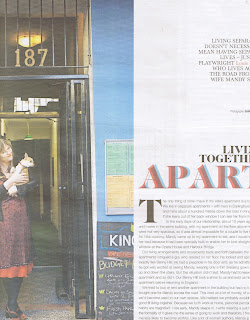
ill-fated and unglamorous model behaviour (who knew she had to have bowel surgery as a result of extreme dieting?) and complementary dressed-by-Sportscraft shots; singer Seal rounds out the issue on the 'Hindsight' page, revealing that Heidi is a "huge role model" for him: "I learn a lot from her and I think that's an important key in relationships."
Features: Human interest features are a specialty of this magazine and hugely satisfying to read. This issue Lucinda Schmidt writes 'No Excuses', which profiles four go-getting career types who schedule time to exercise (leading by example rather than draconian diet editorial). But I most enjoyed 'Living Together Apart', a first-person piece by playwright Louis Nowra about his separate living arrangements with wife author Mandy Sayer. The two are ensconced in different inner city apartments: "We realised we probably wouldn't be a good fit living together. Because we both work at home, personal peccadilloes and habits are magnified: I rise early, Mandy sleeps in. I write wearing a suit because the formality of it gives me the sense of going to work and therefore, I hope, makes me less likely to become slothful. Like a lot of

women authors, Mandy prefers to write in her pyjamas...". Nowra reveals that when they talk about the arrangement with other people, women warm to the idea most: "I have come to the conclusion they know that when men shift in with them, they expect to be looked after. For most wives this is a draining and full-time job." Hooray: this man has seen the light! Quick, spread the word.
Fashion, beauty & pop culture: A small breakout box, 'Who What Wear', features on Sarah Wilson's 'A better life' page, as does Kate Duthie's 'how-to' advice column (this week, change a tyre). Thelma McQuillan styles 'The colour purple' and matches jackets, denim jeans and bags in 'Window Shopping'; Nina Karnikowski gives us a rundown of the hottest sales in 'Bargain Basement'; and Natalie Reilly picks three blue-green eye shades.
Food & design/interiors: Karen Martini cooks up three spicy, seasonal dishes using mussels, lamb and pork-stuffed cabbage, while Kim Terakes gives us his rigatoni with

capsicum and ragu sausage recipe in 'Feed me now'. Scott Bolles reviews a new Mexican restaurant, Matt Skinner educates us about wine from the Barossa Valley and chef Nhut Huynh is the subject of 'What I ate, what I cooked, what I bought'.
Lifestyle & relationships: Alternative health experts are recruited to answer reader's questions in 'What's the alternative' (how to quit smoking for good with a hypnotherapist),
MasterChef judge reveals his food consumption habits in 'My day on a plate', trainer Michelle Bridges tells us how to speed up our metabolism. Columnist Dr Bella Ellwood-Clayton writes of primal bonds looking into why some women experience more intimacy with their children than with their partners. 'Myspace' is the magazine's visually inspiring interiors page: this week the subject is home stylist Janita McMahon.
Publisher: Fairfax
 Mastheads:
Mastheads: Published in
The Sun-Herald, Sydney, and
The Sunday Age, Melbourne.
Readership: 1,297,000 (Roy Morgan March 2009)
Circulation: 701,227 (ABC March 2009)
Book size: 40
Advertisers: Virgin Blue, LulaFlex at David Jones, Al'chemy, Colonial First State, King Furniture, Energy Australia, Sony Ericsson, Disneyland, David Babaii hair products, degabriele Kitchens, Good Weekend Opera In The Vineyards, Emirates, Fed. Gvt Water Rebate Scheme, BBC DVDs, Jeans for Genes Day, Fujitsu, ABC DVDs and Optus.
THE GLOSSARY - SUNDAY MAGAZINEColumnists: Comedian Will Anderson's 'Sunday Roast'

column alternates with actress Sophie Lee's: admittedly, I'm not a huge fan of either, as some weeks they appear to be clutching at straws to deliver wit and insight that often feels uncomfortable or contrived. No doubt delivering a fortnightly column is no mean feat!
Celebrity: The magazine's front-of-book 'Sunday Best' page (one of my favourites) introduces us to a new talent, usually from the field of entertainment or literature, in 'On the verge' (this week it's Australian opera singer Russell Harcourt); 'In my own words', edited by Claire Bradley, is a first-person regular page giving people in the public eye a chance to explain themselves (this week, Bra Boy Koby Abberton has a lot of explaining to do); the cover story profiling Cameron Diaz, written by Hannah Rand, is a satisfying look at the mega-star, fleeting between physical description ("with long legs in dark, skinny denim punctuated with super-sexy black stilettos, she makes a formidable presence as she strolls through
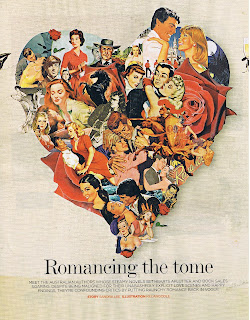
the reception of Santa Monica's premium hotel"), character analysis ("Diaz is a girl who just wants to have fun") and discussion of her career, family, childhood and thoughts on life ("I'm not a woman who says I'm absolutely going to do that or not, because you never know what's going to happen").
Features: Sandra Lee speaks to successful Australian romance authors about their craft, popularity and literary philosophies in 'Romancing the tome'; Beverley Hadgraft relates the story of Chris Davine who had a vasectomy only to lose his son, have the surgery reversed with the help of Professor Earl Owen and father two more children, which helped ease the burden of loss on him and his wife (you couldn't not be moved by this story).
Fashion, beauty & pop culture: 'Jean Genesis' takes on an edgy
Harper's BAZAAR styling aesthetic, mixing studio shots of model Mariana with still-life

(jeans, shirts, tees, ballet flats, boots, vests, ties, hi-tops, accessories) representing various price points to help us achieve the looks (love it); the 'Beauty addict' page edited by Erin Whitty is a weekly visual extravaganza offering up the latest products tied into a theme (luxury palettes); and
Notebook: magazine beauty director and award-winning writer Suzanne Wangmann joins Whitty to pen 'Looking Good', a three-page feature which focuses on the eye area.
Food & design/interiors: The regular 'Appetite' page features a 400-odd-word restaurant review, 'Wine Front' column and 'Three of a find...' breakout box featuring bottle openers. Food editor Donna Hay creates three recipes for kids' birthday parties taken from
Donna Hay Kids' Magazine ($7.95; News Magazines). 'At Home', edited by Karen McCartney, uses a teen boy's bedroom to show us how to brighten up a space with colour. The page has a ticker strip with a small
Inside Out magazine promotion ($7.95; News Magazines).
Lifestyle & relationships: Type A personality type

Rebecca Burrel visits a health retreat in the Hunter Valley ("I leave feeling proud I defied my initial urge to escape"), while new column 'Turning Point', as editor Sara Mulcahy tells us, features "ordinary people who've all experienced a life-changing moment, be it wonderful or tragic, incredible or incidental." Gen X-Pat profiles an Aussie living overseas, 'E-View' allows a celebrity to shamelessly promote a new project they're working on (first question: "What are you flogging?") and the last page, 'Can't live without' gives us a glimpse at a celebrity's most cherished material possessions.
Publisher: News Magazines
Mastheads: Published in
The Sunday Telegraph, Sydney, and
Sunday Herald Sun, Melbourne.
Readership: 3,179,000 (Roy Morgan March 2009)
Circulation: 1,271,872 (ABC March 2009)
Book size: 52
Advertisers: ghd, Visa, Connoisseur, Dare Gallery, GIO, Taylors wines, Fifth Leg wines, Asics, Virgin Blue, King

Furniture, Planet Health Qsilica, Fed Gvt. Water Rebate Scheme, Clarins Men,
SaveTheChildren.org.au, Dr. Lewinn's Private Formula, BBC/ABC Doctor Who DVDs, Nanna's, Nokia/Virgin Mobile, Bay Leather Republic, Disney DVDs, Luxaflex, Barilla/Thai airways,
Vogue Australia, Secret Stone wines.
Both magazines tap into the lives of people outside the proverbial glossy bubble, while concurrently keeping us in touch with the who's what of pop culture and the social issues of the day in a fun, visually inspiring way. They have personality in abundance and have near perfected the mix of serious and frivolous, providing the perfect Sunday distraction for the occasional reader or ravenous media consumer looking to round-out their diet of monthlies, newspapers and blogs.
While Sunday remains the flashier of the two titles, by virtue of its design, glossy stock, fashion and beauty styling, celebrity-centricity and nifty News Magazines associations (even the presence of a Vogue Australia ad adds an aura of coolness), both titles excel at delivering a mix of human interest stories and features that tap into the Zeitgeist.
Sunday Life has more personality by virtue of its beloved columnists (something it has in common with Saturday stablemate Good Weekend), while Sunday appeals to the aspirational, image-conscious, pop-culture savvy, sophisticated urban type (and, therefore, the advertisers who want their money, money, money!). Sunday Life risks alienating is male readership by going more female-friendly, but give a bloke half a chance to get some insight into the female psyche and he'll take it.
Whether advertisers and readers will warm to these new-look supplements remains to be seen. But with their editorial innovations, audience reach and commitment to delivering quality features, styling, celebrity profiles and columns week after week, both titles provide value-for-money print alternatives, where salacious gossip and sensationalised editorial is replaced with a more humane focus, which should keep the monthly and weekly glossies on their toes!
Final notes: While aesthetically
Sunday wins hands-down,
Sunday Life is editorially on-the-money (particularly if you belong to the finer sex).
Glossy rating: 4 for both – skim at your leisure then lend to a friend.
Yours truly,
Girl With a Satchel
 With a change of editor at The Australian Women's Weekly, which always brings with it some uncertainty, conditions are ripe for Notebook: magazine to be pushing itself as a stable alternative for media buyers looking to align their brands with a quality title (albeit one with a much smaller readership: Notebook: has 275,000 readers to The Weekly's 2,217,000 as at the March 2009 audit).
With a change of editor at The Australian Women's Weekly, which always brings with it some uncertainty, conditions are ripe for Notebook: magazine to be pushing itself as a stable alternative for media buyers looking to align their brands with a quality title (albeit one with a much smaller readership: Notebook: has 275,000 readers to The Weekly's 2,217,000 as at the March 2009 audit).









